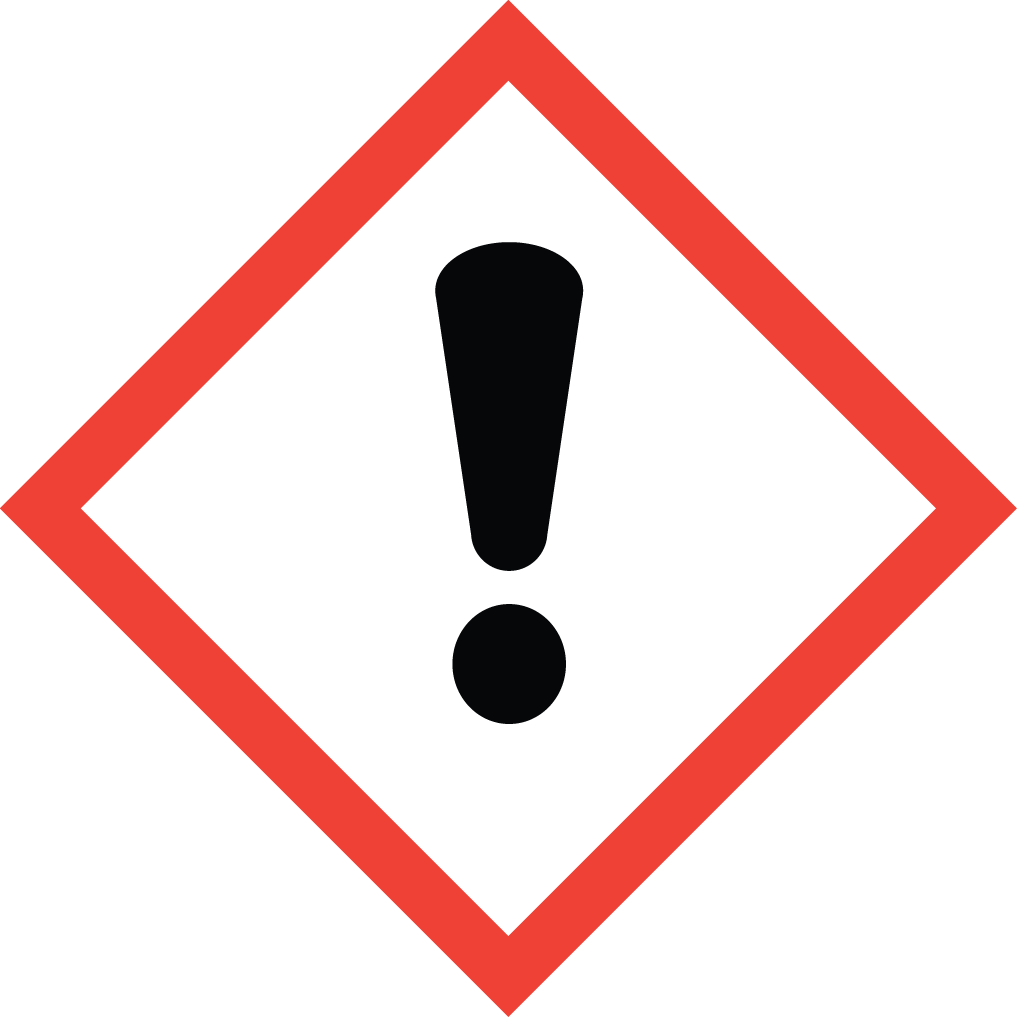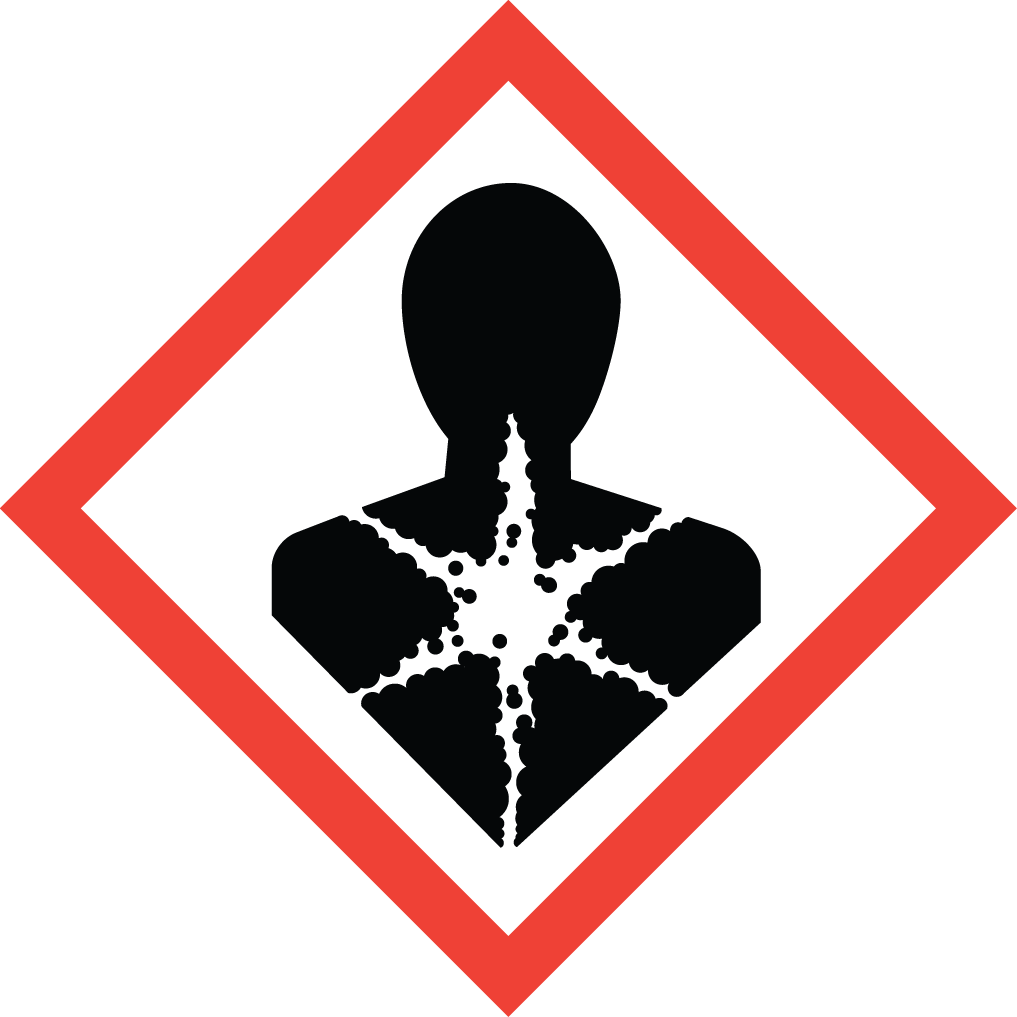Version 3.0
Date revised: 4/26/2019
SAFETY DATA SHEET
Conforms to regulation (EC) no. EU 453/2010
SECTION 1 - IDENTIFICATION OF THE SUBSTANCE/MIXTURE AND OF THE COMPANY/UNDERTAKING
1.1 Product Identifier
1.2 Relevant Identified Uses of the Substance/Mixture and Uses Advised Against
Investigational research by professional users
1.3 Details of the Supplier of the Safety Data Sheet
| Manufacturer National Diagnostics 305 Patton Drive Atlanta, GA 30036 (404) 699-2121 (800) 526-3867 info@nationaldiagnostics.com |
1.4 Emergency Telephone Number
ChemTel Inc.
Contract number MIS8894340
1-800 255-3924 (United States, Canada, Puerto Rico & US Virgin Islands)
01-800-099-0731 (Mexico)
400-120-0751 (China)
000-800-100-4086 (India)
1-300-954-583 (Australia)
0-800-591-6042 (Brazil)
+1-813-255-3924 (All other regions)
SECTION 2 - HAZARDS IDENTIFICATION
2.1 Classification of the Substance or Mixture
Classification according to Regulation (EC) No. 1272/2008 [EU-GHS/CLP]
H315 - Skin Corrosion/Irritation (Category 2)
H317 - Skin Sensitizer (Category 1)
H320 - Serious Eye Damage/Eye Irritation (Category 2B)
H341 - Germ Cell Mutagenicity (Category 2)
2.2 Label Elements
| GHS Label Elements | ||
 |  | WARNING H315 - Causes skin irritation. |
2.3 Other Hazards
None found.
SECTION 3 - COMPOSITION/INFORMATION ON INGREDIENTS
3.2 Mixture
Chemical Names/Description
Aqueous solution of glyoxal and dipotassium phosphate. All other ingredients less than one percent respectively.
Component List
| Component | % Comp. | CAS # | EC # | 1278/2008 Classification |
|---|---|---|---|---|
| Glyoxal | 3.5 - 5 | 107-22-2 | 203-474-9 | H315, H317, H319, H332, H335, H341 |
SECTION 4 - FIRST AID MEASURES
4.1 Description of First Aid Measures
Inhalation
Remove to fresh air. If not breathing, give artificial respiration. If breathing is difficult, give oxygen. Call a physician.
Ingestion
Induce vomiting immediately as directed by medical personnel. Never give anything by mouth to an unconscious person. Call a physician.
Skin
Immediately flush skin with plenty of soap and water for at least 15 minutes while removing contaminated clothing and shoes. Get medical attention. Wash clothing before reuse. Thoroughly clean shoes before reuse.
Eyes
Immediately flush eyes with plenty of water for at least fifteen minutes, lifting lower and upper eyelids occasionally. Get medical attention immediately.
4.2 Most Important Symptoms and Effects, Both Acute and Delayed
Inhalation
Coughing, shortness of breath.
Ingestion
Nausea, vomiting, and diarrhea.
Skin
Redness, itching, and pain.
Eyes
Redness and pain.
4.3 Indication of Any Immediate Medical Attention and Special Treatment Needed
Unknown/not applicable
SECTION 5 - FIRE FIGHTING MEASURES
5.1 Extinguishing media
Use media appropriate to the primary cause of fire.
5.2 Special Hazards Arising from the Substance/Mixture
Hazardous Combustion Products
Thermal decomposition products may include carbon monoxide and carbon dioxide.
Hazardous Decomposition Products
Carbon dioxide and carbon monoxide may form when heated to decomposition.
Hazardous Polymerization
Will not occur under normal conditions of use (See Sections 10.4 & 10.5).
5.3 Advice for Firefighters
In the event of a fire, wear full protective clothing and NIOSH-approved self-contained breathing apparatus with full facepiece operated in the pressure demand or other positive pressure mode.
5.4 Further Information
No data available.
SECTION 6 - ACCIDENTAL RELEASE MEASURES
6.1 Personal Precautions
Wear appropriate protective equipment as specified in Section 8.
6.2 Environmental Precautions
Prevent discharge into the environment. Dike spills and stop leakage where practical. Do not allow material to enter drains.
6.3 Methods and Materials for Containment and Cleaning Up
Contain and clean up spill immediately, prevent from entering floor drains. Contain liquids using absorbents. Shovel all spill materials into disposal drum. Scrub spill area with detergent, flush with copious amounts of water.
6.4 References to Other Sections
For disposal information see Section 13. For protective clothing and equipment see Section 8.
SECTION 7 - HANDLING AND STORAGE
7.1 Precautions for Safe Handling
Avoid contact and inhalation. Do not get in eyes, on skin, on clothing. Wash thoroughly after handling.
7.2 Conditions for Safe Storage (including any incompatibles)
Keep in a tightly closed container, stored in a cooled, dry, ventilated area.
Incompatibles
Reacts weakly to acids. Incompatible with strong oxidizing agents, strong bases, silver, copper and iron salts. Corrosive to most metals.
7.3 Specific End Uses
Investigational research by professional users
SECTION 8 - EXPOSURE CONTROLS/PERSONAL PRECAUTIONS
8.1 Control Parameters
ACGIH Threshold Limit Value (TLV):
none established
OSHA Permissible Exposure Limit (PEL):
none established
8.2 Exposure Controls
Engineering Controls
A system of local and/or general exhaust is recommended to keep employee exposures below the Airborne Exposure Limits. Local exhaust ventilation is generally preferred because it can control the emissions of the contaminant at its source.
Respiratory Protection
For conditions of use where exposure to the dust or mist is apparent, a full-face dust/mist respirator may be worn. For emergencies or instances where the exposure levels are not known, use a full-face positive-pressure, air-supplied respirator.
Eye Protection
Use chemical safety goggles and/or a full face shield where splashing is possible. Maintain eye wash fountain and quick-drench facilities in work area.
Skin Protection
Wear impervious protective clothing, including boots, gloves, lab coat, apron or coveralls, as appropriate, to prevent skin contact.
SECTION 9 - PHYSICAL AND CHEMICAL PROPERTIES
9.1 Information on Basic Physical & Chemical Properties
| a. Appearance | Clear, colorless solution | b. Odor | None |
| c. Odor Threshold | None | d. pH | 9 |
| e. Melting/Freezing Point (oC) | ~4 | f. Boiling point (oC) | 100 |
| g. Flash Point (oC) | N.A. | h. Evaporation Rate | Water |
| i. Flammability | N.A. | j. Upper/Lower Flammability or Explosive Limits | N.A. |
| k. Vapor Pressure | Water | l. Vapor Density (Air = 1) | Air |
| m. Relative Density | 1.16 | n. Water Solubility | Miscible |
| o. Partition Coefficient n-octanol/water | Mixture | p. Autoignition Temperature (oC) | N.A. |
| q. Decomposition Temperature (oC) | Not applicable. | r. Viscosity | No data available. |
| s. Explosive Properties | N.A. | t. Oxidizing Properties | Not an oxidizer |
SECTION 10 - STABILITY AND REACTIVITY
10.1 Reactivity
Reactive with amines or strong oxidizers.
10.2 Chemical Stability
Components degrade to non reactive materials at room temperature.
10.3 Possibility of Hazardous Reactions
Will not occur under normal conditions of use (See Sections 10.4 & 10.5).
10.4 Conditions to Avoid
No information found.
10.5 Incompatible Materials
Reacts weakly to acids. Incompatible with strong oxidizing agents, strong bases, silver, copper and iron salts. Corrosive to most metals.
10.6 Hazardous Decomposition Products
Carbon dioxide and carbon monoxide may form when heated to decomposition.
SECTION 11 - TOXICOLOGICAL INFORMATION
Product LD50 Values
Oral Rat LD50 (mg/kg)
220000
Dermal Rabbit LD50 (mg/kg)
N.D.
Component Cancer List Status
| NTP Carcinogen | |||
| Known | Anticipated | IARC Category | |
|---|---|---|---|
| Glyoxal | No | No | None |
Potential Health Effects
Inhalation
Causes irritation to the respiratory tract.
Ingestion
Harmful if swallowed. Specific health effects from ingestion unknown. May cause irritation to the gastrointestinal tract.
Skin
Causes irritation to skin.
Eyes
Causes irritation to eyes.
Carcinogenicity
Not listed by ACGIH, IARC, NIOSH, NTP, or OSHA.
Mutagenicity
No information found.
Reproductive Toxicity
No information found.
Teratogenic Effects
No information found.
Routes of Entry
No information found.
Target Organ Statement
No information found.
SECTION 12 - ECOLOGICAL INFOMATION
12.1 Toxicity
| Vertebrates | Invertebrates | Algae | Microorganisms | |
|---|---|---|---|---|
Aquatic Toxicity (ppm unless otherwise noted) | Lc50 (96 hr, golden orfe)) 464mg/l | LC50 (96hr, shrimp) 53mg/l | EC50 (72hrs) 347mg/l | EC50 (16hr) 102mg/l |
| Birds | Arthropods | Plants | Microorganisms | |
|---|---|---|---|---|
Terrestrial Environment Toxicity (ppm unless otherwise noted) | No data | No data | EC50 (sativa) >1001mg/kg soil | EC50 >400mg/kg soil |
12.2 Persistence and Degradability
Readily Biodegradable- >90% elimination in 19 days
12.3 Bioaccumulative Potential
Estimated BCF 3.2
12.4 Mobility in Soil
log Koc 0.32
12.5 Results of PBT and vPvB Assessment
Not PBT or vPvB
12.6 Other Adverse Effects
None
SECTION 13 - DISPOSAL CONSIDERATIONS
13.1 Waste Treatment Methods
Offer surplus or non-recyclable product to licensed disposal company. Disposal is subject to user compliance with applicable law and product characteristics at time of disposal. Dispose of packaging as product.
SECTION 14 - TRANSPORT INFORMATION
| ADR/RID | IATA | IMO | DOT | |
|---|---|---|---|---|
| 14.1 UN Number | N.A. | N.A. | N.A. | N.A. |
| 14.2 Shipping Name | Not Regulated | Not Regulated | Not Regulated | Not Regulated |
| 14.3 Hazard Class | N.A. | N.A. | N.A. | N.A. |
| 14.4 Packing Group | N.A. | N.A. | N.A. | N.A. |
| 14.5 Environmental Hazards | N.A. | N.A. | Not regulated | N.A. |
| 14.6 Special Precautions | N.A. | N.A. | N.A. | N.A. |
SECTION 15 - REGULATORY INFORMATION
15.1 Safety, Health and Environmental Regulations/Legislation Specific for the Substance/Mixture
United States
TSCA Regulatory Statement
All intentional ingredients are listed on the TSCA Inventory.
SARA 311/312 Hazard Categories
| Component | Fire | Pressure | Reactivity | Acute | Chronic |
|---|---|---|---|---|---|
| Glyoxal | No | No | No | Yes | No |
Europe
EEC Regulatory
All intentional ingredients are listed on the European EINECS Inventory.
SECTION 16 - OTHER INFORMATION
Revisional Updates
4/26/2019 - Updated Section 1.4
5/29/2015 - Updated Sections 2.1 and 3.2
10/22/2013 - Released Version 1.0
NFPA Codes
Health 1 Flammability 0 Reactivity 0
Dangers
Glyoxal
H315 - Causes skin irritation.
H317 - May cause an allergic skin reaction.
H319 - Causes serious eye irritation.
H332 - Harmful if inhaled.
H335 - May cause respiratory irritation.
H341 - Suspected of causing genetic defects.
MANUFACTURER DISCLAIMER: The information given herein is offered in good faith as accurate, but without guarantee. Conditions of the use and suitability of the product for particular uses are beyond our control. All risks of use of the product are therefore assumed by the user. Nothing is intended as a recommendation for uses which infringe valid patents or as extending license under valid patents. Appropriate warnings and safe handling procedures should be provided to handlers and users.